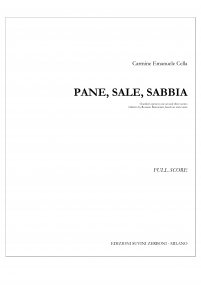Cartography of Peripheral Spaces
ISMN : 979-0-2325-6589-7
- Login to create your own lists
SPATIOTEMPORAL CARTOGRAPHIES is inspired by the famous dictum of Polish-American writer Alfred Korzybski: “the map is not the territory.” It explores the concept of non-linear form. Every work in this cycle is made up of sections that can be performed in any order, but without interruption, so that beginnings and endings are not obvious to the listener. Referring to these sections as “spaces,” Méndez conceives of each piece as the map of a variable landscape that can appear in many forms and evolve through time in different ways. Just as a human can chart many different paths when walking through a territory—having a different spatiotemporal experience of the area with each path—performers can find their own trajectories through each work, and vary them from performance to performance. Listeners, therefore, traverse the musical territory of the piece in ways that are not fully determined by the score, but instead depend on performers and their decisions.
“Cartographies of Peripheral Spaces” explores concepts of interior and exterior. The piece exists in two forms: one for quartet of saxophone, violin, piano, and percussion (subtitled “Interior”), and another for a septet made up of the original quartet instruments plus flute, contrabassoon, and cello (subtitled “Periphery”). The quartet plays the same music in both versions, functioning in “Periphery” as an interior core that is expanded by the three additional instruments. (In performance, this conception of the septet is realized spatially by positioning the quartet at the center of the stage, with the other instruments surrounding it.)
Text by Manuel Laufer
Recorded by Luca Gardani.
Mastered by Mural Colak
Keiko Murakami- prepared flute
Pablo Coello- prepared saxophones
Jesus Coello- prepared contrabassoon
Diego Ventoso- percussion/found objects
David Duran- piano
Roberto Alonso- prepared violin
Hugo Paiva- prepared cello
Pages - 68







